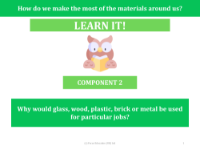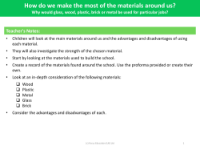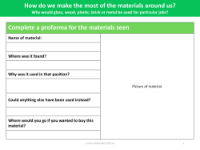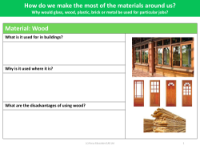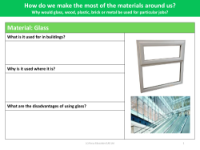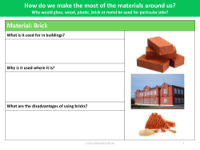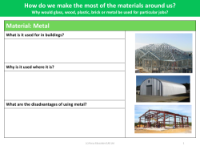Merits and drawbacks of plastic - Worksheet
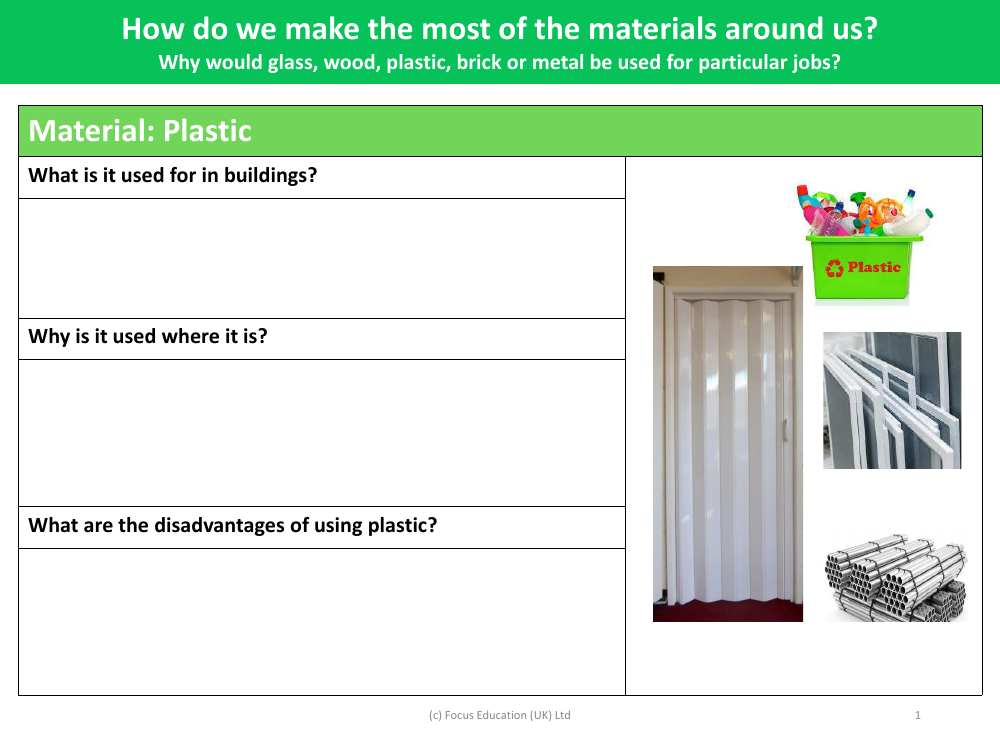
Science Resource Description
Plastic is a versatile material that is commonly utilised in the construction industry for a variety of applications. Its use in buildings is widespread due to its numerous beneficial properties. For instance, plastic is often chosen for its durability, lightweight nature, and its resistance to moisture and corrosion, making it ideal for both structural and design purposes. It is frequently used in components such as insulation, piping, window frames, and flooring. The adaptability of plastic allows it to be shaped into a myriad of forms, enabling architects and builders to meet specific design and functional requirements within the construction of modern buildings.
However, the use of plastic also comes with several disadvantages that must be considered. Environmental concerns are at the forefront, as plastic is a major contributor to pollution and is not biodegradable, leading to long-term waste management issues. Additionally, plastic production typically involves the use of fossil fuels, which has implications for carbon emissions and climate change. In terms of building performance, certain plastics can release toxic chemicals when burned, and some may not be as structurally robust as other materials like metal or wood. As we strive to make the most of the materials available to us, it is essential to weigh these drawbacks against the advantages and to consider alternatives such as glass, wood, brick, or metal, which may be more suitable for particular jobs based on their unique properties and environmental impact.
